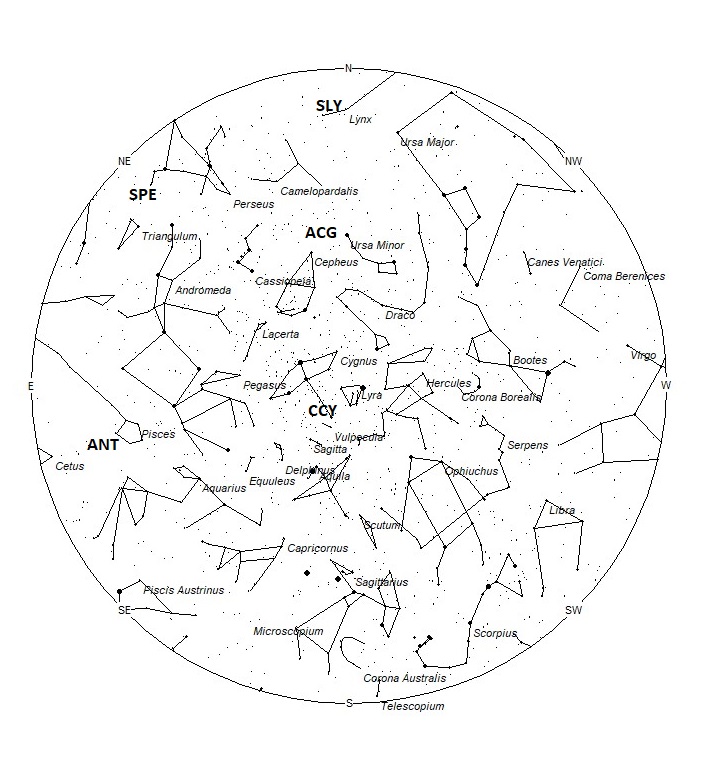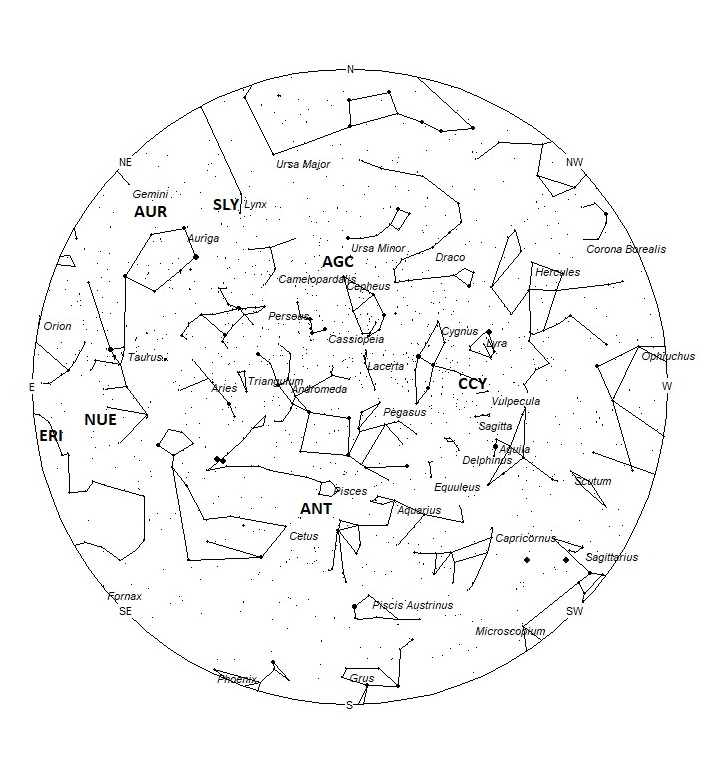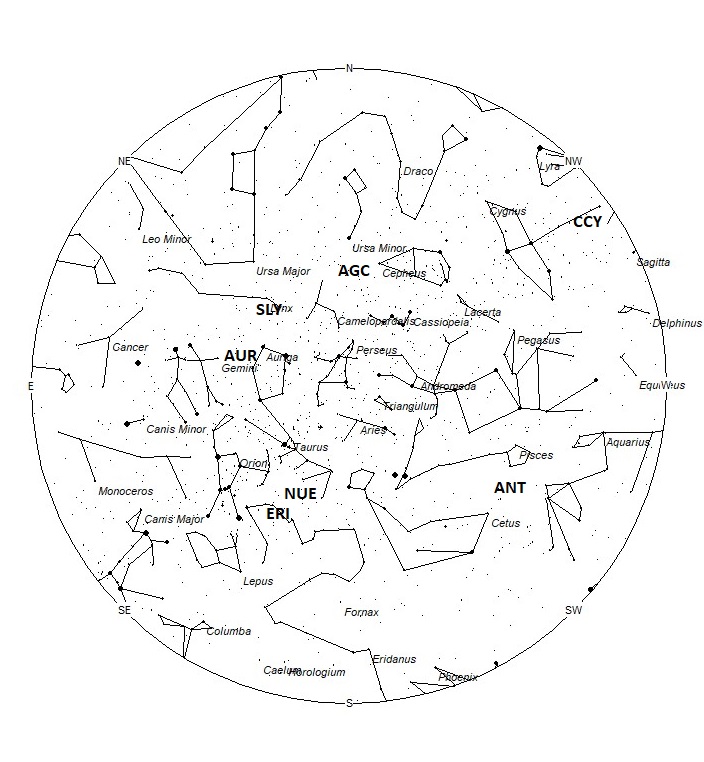
September offers longer nights in the northern hemisphere that tend to be less hazy than those experienced in mid-summer. In the sky, no major showers are visible from either hemisphere, but the northern hemisphere enjoys the advantage of higher sporadic rates. Most of the shower activity this month is produced from the Perseus-Aurigid complex active this time of year. These showers rarely produce more than 5 meteors per hour but still manage to produce most of the shower activity seen this month. Unfortunately, the Perseus-Aurigid complex lies too low in the northern sky for southern hemisphere observers to view very well. Video studies have shown that the Taurids are visible as early as September 23rd, therefore after this date the Anthelion radiant will no longer be listed until the Taurid showers end in December. The Anthelion meteors are still active but their radiant is superimposed upon that of the more numerous Taurids, therefore it is impossible to properly separate these meteors. Observers in the southern hemisphere suffer from some of their lowest rates of the year this month. The Taurid radiants are not too badly placed so observers south of the equator can expect to see a little of this activity from this source this month. Lastly, recent video data has shown that the Orionids are active during the last week of the month, often being the most active radiant in the sky even though their maximum is not until October 22nd.
During this period, the moon reaches its last quarter phase on Thursday September 10th. At this time, the moon is located 90 degrees west of the sun and rises near 23:00 local daylight saving time (LDST) on September 9th. This weekend the waning gibbous moon will rise during the early evening hours and will spoil the viewing for the remainder of the night. The estimated total hourly meteor rates for evening observers this week is near 3 as seen from mid-northern latitudes and 2 as seen from tropical southern locations (25S). For morning observers, the estimated total hourly rates should be near 8 as seen from mid-northern latitudes (45N) and 5 as seen from tropical southern locations (25S). The actual rates will also depend on factors such as personal light and motion perception, local weather conditions, alertness, and experience in watching meteor activity. Rates are reduced during this period due to moonlight. Note that the hourly rates listed below are estimates as viewed from dark sky sites away from urban light sources. Observers viewing from urban areas will see less activity as only the brighter meteors will be visible from such locations.
These sources of meteoric activity are expected to be active this week.
.
Detailed information on each source will continue next week when viewing conditions are more favorable.
| SHOWER | DATE OF MAXIMUM ACTIVITY | CELESTIAL POSITION | ENTRY VELOCITY | CULMINATION | HOURLY RATE | CLASS |
| RA (RA in Deg.) DEC | Km/Sec | Local Daylight Saving Time | North-South | |||
| chi Cygnids (CCY) | Sep 13 | 19:38 (294) +30 | 19 | 22:00 | <1 – <1 | IV |
| Anthelion (ANT) | – | 23:44 (356) -02 | 30 | 02:00 | 1 – 1 | II |
| August gamma Cepheids (AGC) | Aug 28 | 00:39 (010) +81 | 44 | 03:00 | <1 – <1 | IV |
| September epsilon Perseids (SPE) | Sep 10 | 02:52 (043) +38 | 65 | 05:00 | 1 – <1 | II |
| nu Eridanids (NUE) | Sep 24 | 04:00 (060) +03 | 67 | 06:00 | <1 – <1 | IV |
| eta Eridanids (ERI) | Aug 10 | 04:26 (067) -05 | 65 | 06:00 | <1 – <1 | IV |
| Aurigids (AUR) | Aug 31 | 06:28 (097) +39 | 67 | 08:00 | <1 – <1 | II |
| September Lyncids (SLY) | Sep 11 | 06:49 (102) +54 | 59 | 08:00 | <1 – <1 | IV |
 American Meteor Society
American Meteor Society


